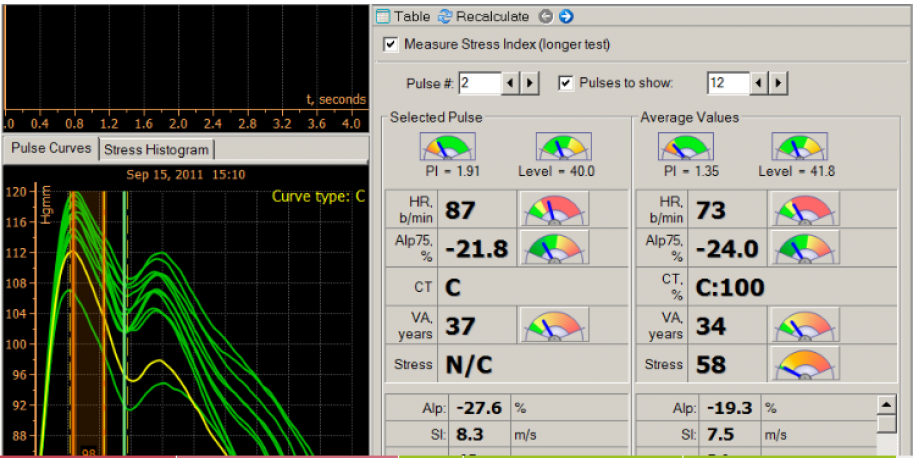Angioscan: How it diagnoses early cardio-vascular changes

Angio Scan-01 : A professional diagnostic device for assessment of arterial function state.
Cardiovascular disease often develops without any symptoms and is undetected until it is far advanced. Heart attack or stroke is often the first manifestation of atherosclerosis in patients who have not had any prior symptoms of the disease.
Angioscan identifies patients, whose early-stage cardiovascular disease is undetected by the existing diagnostic methods, and direct their physicians to prescribe cardiovascular therapies at the time when such interventions are most effective.
AngioScan-01 : A professional diagnostic device for assessment of arterial function state.
Cardiovascular disease often develops without any symptoms and is undetected until it is far advanced. Heart attack or stroke is often the first manifestation of atherosclerosis in patients who have not had any prior symptoms of the disease.
Angioscan identifies patients, whose early-stage cardiovascular disease is undetected by the existing diagnostic methods, and direct their physicians to prescribe cardiovascular therapies at the time when such interventions are most effective.
The current cardiovascular diagnostic tools assess risk factors (high blood pressure, elevated cholesterol levels, etc.) and detect atherosclerotic plaque (by coronary angiography, stress testing, etc.). However, the diagnosis of the risk factors in a patient provides no information about the early pathological changes in his blood vessels; and, by the time atherosclerotic plaque is detected, the disease is already well advanced. The current diagnostic approaches segment all adults based on their CVD risk: high, medium and low. In the USA, for instance, the medium risk adults comprise one-third of the population. In order to provide targeted therapy to such individuals, more granular clinical information about the CVD risk is needed.
A non-invasive test with Angioscan takes 5 minutes and includes the following:
An assessment of several parameters of cardiovascular health:
Stiffness of arterial wall
Elasticity of aorta
Central arterial blood pressure
Endothelial function in small (resistive) and large (conductive) arteries
Ability of endothelial cells to produce nitric oxide, as a measure of protection against atherosclerosis
Analysis of pulse wave shape (amplitude and timing of early and late systolic waves)
Augmentation index (effect of the reflected wave)
An assessment of the level of stress and the health of baro-receptor sensor system
An evaluation of biological age of the vascular system
Monitoring the effectiveness of cardiovascular therapies
Early detection of cardiovascular disease, by assessing arterial stiffness and endothelial dysfunction, provides with detailed and clinically valuable information, and, as was shown in a number of clinical studies, helps identify patients at high risk for cardiovascular disease.
AngioScan is an innovative technology created for performing a noninvasive and radiation free examination of heart and vessels by assessing the state of arterial function. The term “arterial function” concerns such parameters as stiffness of arterial wall and state of endothelium. The technology allows one to easily and reliably check the heart, and to make early diagnosis of cardiovascular diseases.
Diagnostic complex “AngioScan – 01” is based on recording a pulse wave by an optical sensor operating in the near infrared. The signal received gives a detailed information about the state of stiffness of arterial wall. The occlusion test evaluates the state of endothelial function.
The unique feature of the technology is a contour analysis, performed for analysis of stiffness of arterial wall and simultaneous assessment of vasomotor endothelial function. At the same time the state of the endothelium in small (resistive) and large (conductive) arteries is assessed.
The advantages of a diagnostic system “AngioScan – 01” are the following:
- Ease of testing;
- Photo plesthimography ,no exposure to harmful radiations
- Automatic analysis of the parameters tested;
- The stiffness of the arterial wall is assessed by evaluating of augmentation index with the visualization of early and late systolic waves;
- Assessment of endothelial function in small (resistive) and large (conductive) arteries;
- Evaluation of the central arterial blood pressure.
Leave A Comment